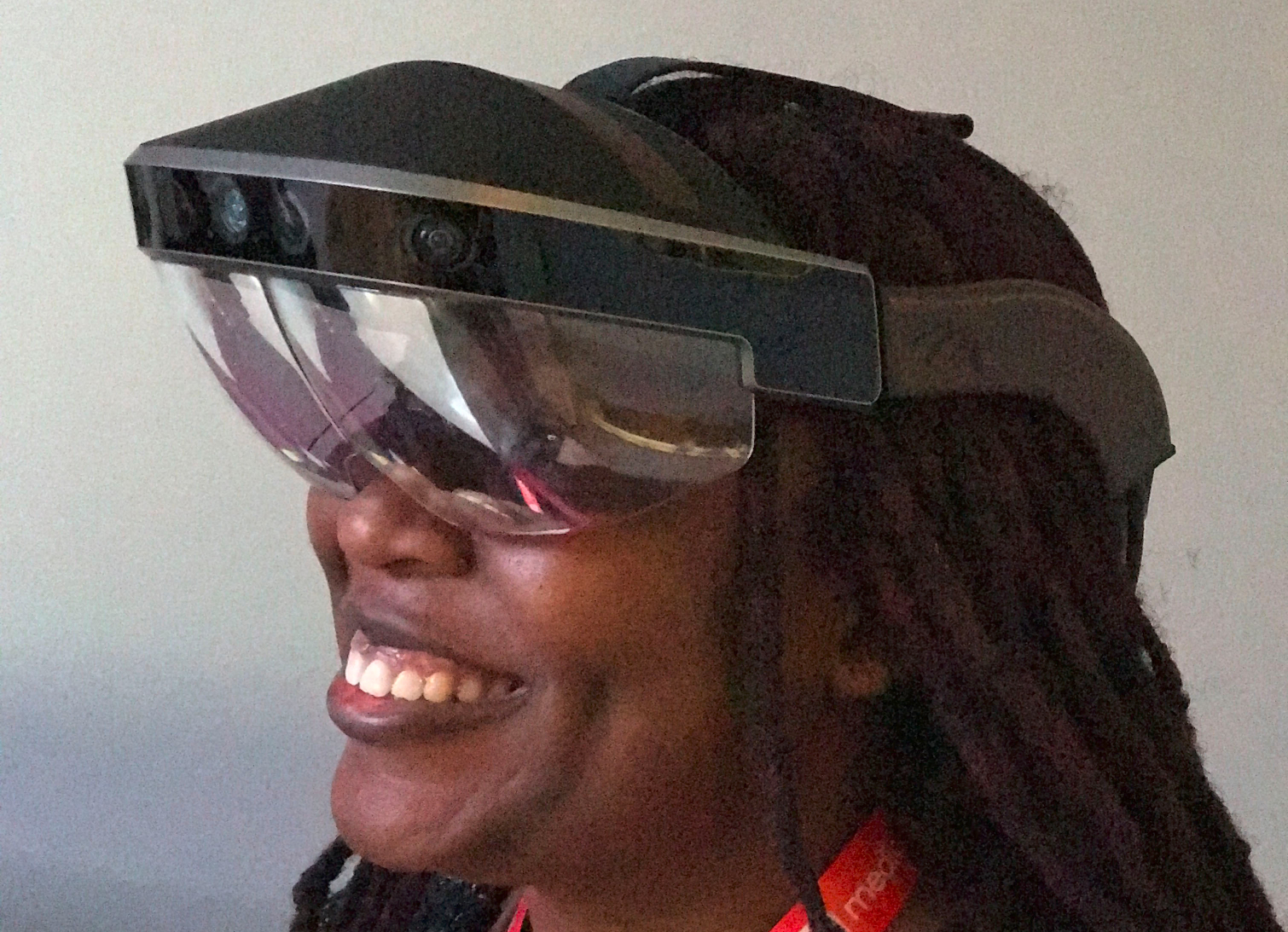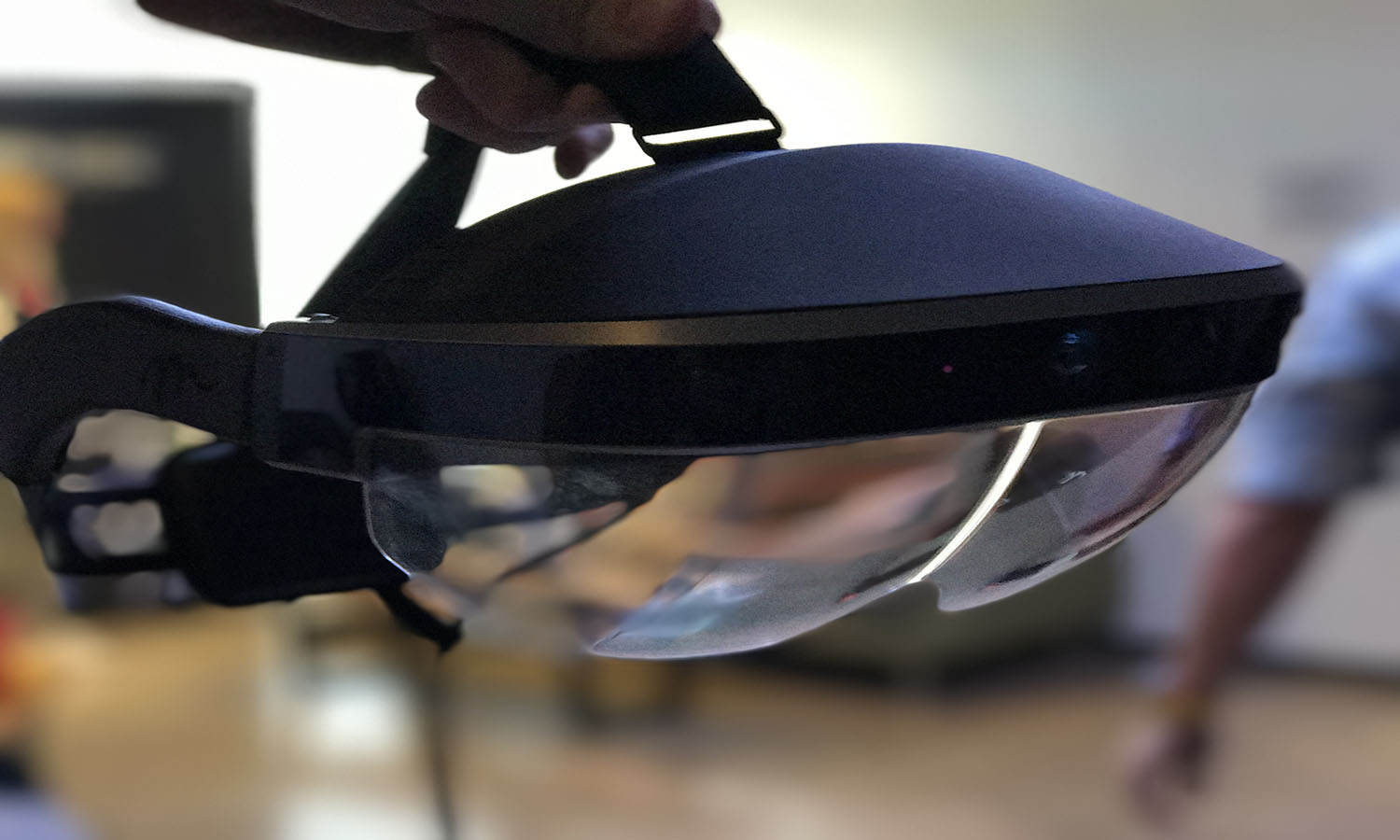Meta 2 is the Augmented Reality of Tomorrow, Today
Meta's latest iteration of its augmented reality headset is aggressively priced and set to debut this year.
Today, I reached out and touched the primary parts of the human brain floating in front of me. Every interaction lead to a narration explaining how that specific part functioned in bright colorful animations. By the end of the demo, I had constructed a holographic mind in the midst of blowing my real one -- all thanks to the Meta 2 augmented reality headset.

Set to debut sometime this year, the device is available for pre-order for $949. It's aggressively priced to get the hardware in more developer hands, at least more than the Meta 2’s primary competitor: Microsoft Hololens. Priced at wallet-emptying $3,000, Hololens is attempting to cement its position as the de facto augmented reality device, by way of simply being Microsoft. But through a series of demos, I found that the Meta 2 has Hololens beat on a number of fronts.
One of the first things I noticed trying on Meta 2 is the sheer comfort factor. The band is composed of leatherette-wrapped memory foam with a plastic knob in the back to tighten or loosen the overall fit. The front houses several sensors, including a sensor array for positional tracking, a 720p front camera and integrated speakers near your ears.

The headset has a pair of large tinted screens, which can easily accommodate people that wear glasses. Once secured, the Meta 2 sat lightly on my head, like it belonged there. In the occasions I've worn Hololens, it's been a bit of an awkward fit.
But the biggest difference between the two systems is the quality of the images rendered in augmented reality. Boasting a wide 90-degree field of view (compared to Hololens' 40 degrees), during my brain dem, it looked like I was staring up at a galaxy of twinkling stars, which were in actuality electricity-firing neurons. Thanks to its 2560 x 1440 resolution, I could clearly see the glowing veins and folds that make up the organ. In another demo, I could see strands of the presenter's hair.
According to Ryan Pamplin, Meta’s VP of sales and partnerships, Meta 2 has an operating environment that runs on top of Windows, and it takes a mere 3-5 seconds for the headset to scan a room for a proper AR overlay. The myriad of sensors working in tandem can then create 3D holograms in real time, with which you can interact.

MORE: Best Augmented Reality Apps
Sign up to get the BEST of Tom's Guide direct to your inbox.
Get instant access to breaking news, the hottest reviews, great deals and helpful tips.
But while Meta 2's most obvious competition is Microsoft's Hololens, Pamplin, a die-hard technologist, is looking at smartphones, laptops and monitors as his competition. Unsatisfied with the current head-buried-in-a-screen interactions people have with their tech, Pamplin and Meta are pursuing "a more seamless integration between the digital and physical worlds." This way, people will be able to maintain eye contact again instead of glancing at a screen every couple of minutes.
It's a bit idealistic, but Meta is hoping to sell the world at large on the concept with a boatload of content. Which is why the Meta 2 has such a relatively affordable price tag. If more developers can get their hands on the technology, the content will follow. Because no matter how cool the hardware is, without enough compelling software, it's just a fancy paperweight.
While he wouldn't disclose an exact figure, Pamplin said that Meta is on schedule to ship out tens of thousands of the headset over the coming year. The company also has a number of big-name partnerships in the automotive, architecture and sports arenas that can only help Meta 2 take those much-needed steps that could take it from cool developer toy to viable consumer product.
Sherri L. Smith has been cranking out product reviews for Laptopmag.com since 2011. In that time, she's reviewed more than her share of laptops, tablets, smartphones and everything in between. The resident gamer and audio junkie, Sherri was previously a managing editor for Black Web 2.0 and contributed to BET.Com and Popgadget.

